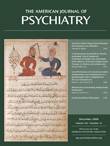Comments on “Prescription Drug Dependence and Evolving Beliefs About Chronic Pain Management”
To the Editor: Jon Streltzer, M.D. and Luther Johansen, M.D. presented a case of an unfortunate woman, a chronic pain patient, who developed an addiction to multiple drugs, including opioids, and finally overdosed. They use this case to develop a position against chronic opioid analgesic therapy, which they describe as a “medical subculture ( 1 , p. 506).”
On behalf of Pain Medicine , we would like to take issue with some of the statements in this article that we consider inaccurate, as they are not adequately referenced.
Multidisciplinary pain centers did not develop to treat chronic pain patients with pain out of proportion to objective findings but to treat intractable chronic pain patients who had multiple comorbidities (2) .
Treatment usually included detoxification because opioids were thought (with little evidence) to invariably cause addiction and decrease function (2) .
Additional evidence (3) now supports the concept of “pseudoaddiction,” originally based on one case report.
Contrary to their assertion of little evidence for chronic opioid analgesic therapy effectiveness, there is significant evidence for the efficacy, safety, and improvement in function with chronic opioid analgesic therapy. Two meta-analyses (4 , 5) of more than 40 placebo-controlled chronic opioid analgesic therapy pain studies both showed opioids as more effective than placebo, and one (5) demonstrated improved functional outcomes. A structured evidence-based review (6) of 11 studies (2,877 patients) concluded that long-term chronic opioid analgesic therapy can lead to significant functional improvement. Other evidence suggests that chronic opioid analgesic therapy may be associated with low risk of abuse/addiction (2) .
Many of the over 50 million American chronic pain patients benefit from management that includes opioids. Addiction disorders occur in 10%–15% of these patients and in the general population without pain. We must train physicians to treat pain effectively and safely based on evidence, including managing risks such as addiction.
1. Streltzer J, Johansen L: Prescription drug dependence and evolving beliefs about chronic pain management. Am J Psychiatry 2006; 163:594–598Google Scholar
2. Fishbain DA: Chronic Pain and Addiction, in Weiner’s Pain Management, A Practical Guide for Clinicians, 7th Edition, Boswell MV, Cole BE (eds.). American Academy of Pain Management, Boca Raton, Fla, CRC Taylor and Francis Press, 2006, pp 117–139Google Scholar
3. Lusher J, Elander J, Bevan D, Telfer P, Burton B: Analgesic addiction and pseudoaddiction in painful chronic illness. Clin J Pain 2006; 22:316–324Google Scholar
4. Eisenberg E, McNicol ED, Carr DB: Efficacy and safety of opioid agonists in the treatment of neuropathic pain of nonmalignant origin: systematic review and meta-analaysis of randomized controlled trials. JAMA 2005; 293: 3043–3052Google Scholar
5. Furlan AD, Sandoval JA, Mailis-Gagnon A, Tunks E: Opioids for chronic noncancer pain: a meta-analysis of effectiveness and side effects. CMAJ 2006; 174: 1589–1594Google Scholar
6. Devulder J, Richarz U, Nataraja, SH: Impact of long-term use of opioids on quality of life in patients with chronic, nonmalignant pain. Cur Med Res Opin 2005; 21:1555–1568Google Scholar



